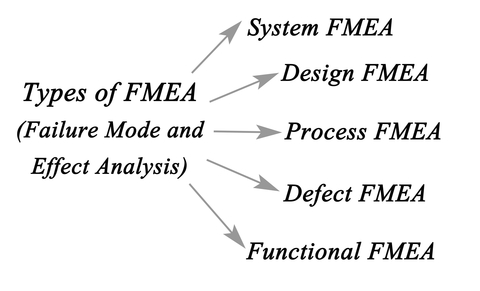
Implementing Failure Mode and Effects Analysis (FMEA) in an organization often seems like a relatively straightforward and simple task, but it often hides some intricacies that have to be accounted for. You need to be particularly wary of how the FMEA process affects the long-term performance of your organization, and what improvements you get as a result of its application. By putting enough thought into the fundamental process, you can easily ensure that FMEA will drive your organization towards permanent improvements in multiple areas.
1. You must address every critical issue
FMEA is not something that you can just apply selectively to specific issues in the production process. You either do it all the way, or you look for an alternative solution that’s better suited for a modular approach to its implementation. You cannot leave any critical issues unaccounted for when running a FMEA iteration. However, this also assumes that you have a good grasp of what exactly constitutes a critical issue in your particular organization, which is why so many companies fail at getting this point right on a regular basis. You need to work with accurate sources of data. Which actually leads us to the next point¦
2. You have to work with real-world models
When reviewing your system structure to determine potential points for improvement, you have to keep in mind that simulated, lab data is far from what you’ll be working with in the real world, and you must be prepared to account for that in the FMEA iteration. If you can obtain data sources that provide you with a more realistic model that matches the actual situation on the market accurately, this would be much better than relying on simulated or predicted data, which may or may not match reality all too well.
3. FMEA must be integrated deep into the production cycle
FMEA should not be thought of as something that comes after everything else is put in place. A successful FMEA run requires that you integrate it deeply within your actual production processes, and it has to be tied closely to other core steps for an optimal effect. This may often mean that you need to rebuild your production infrastructure from the ground up (or at least to some extent), but at least it will ensure a sustainable long-term solution. Of course, you’ll have to make adjustments to that system sooner or later no matter how robustly it was designed in the first place.
4. You need a strict, rigid procedure for FMEA
A systematic approach to FMEA guarantees consistent results, which is a critical factor when working with the technique. After all, FMEA was among the pioneering techniques in terms of the rigidity and robustness of its design, and this has to be carried over to your actual implementations of it as well. Come up with a plan and stick to it as best as you can. You’ll sometimes have to deviate from the original solution, but as long as you’re learning something along the way and you gain a better understanding of how your company’s systems work together, you’re still ahead. The point of FMEA is, after all, to drive an organization towards continuous improvement in a managed, systematic way.
5. FMEA must produce a workable final result
And this brings us to the final point, but one that’s just as important as the others. When working with FMEA, you have to ensure that its implementation actually leads to concrete, workable results that you can put to use within your organization and see a long-term improvement from them. There’s not much point in learning something during an FMEA run if it doesn’t ultimately lead to changes in the company’s structure. Keep in mind that sometimes those changes will be on a smaller scale than you would expect, but there’s nothing wrong with making a less pronounced alteration to the company’s structure as long as it improves something overall.
Become a Lean Six Sigma professional today!
Start your learning journey with Lean Six Sigma White Belt at NO COST






Leave a Reply